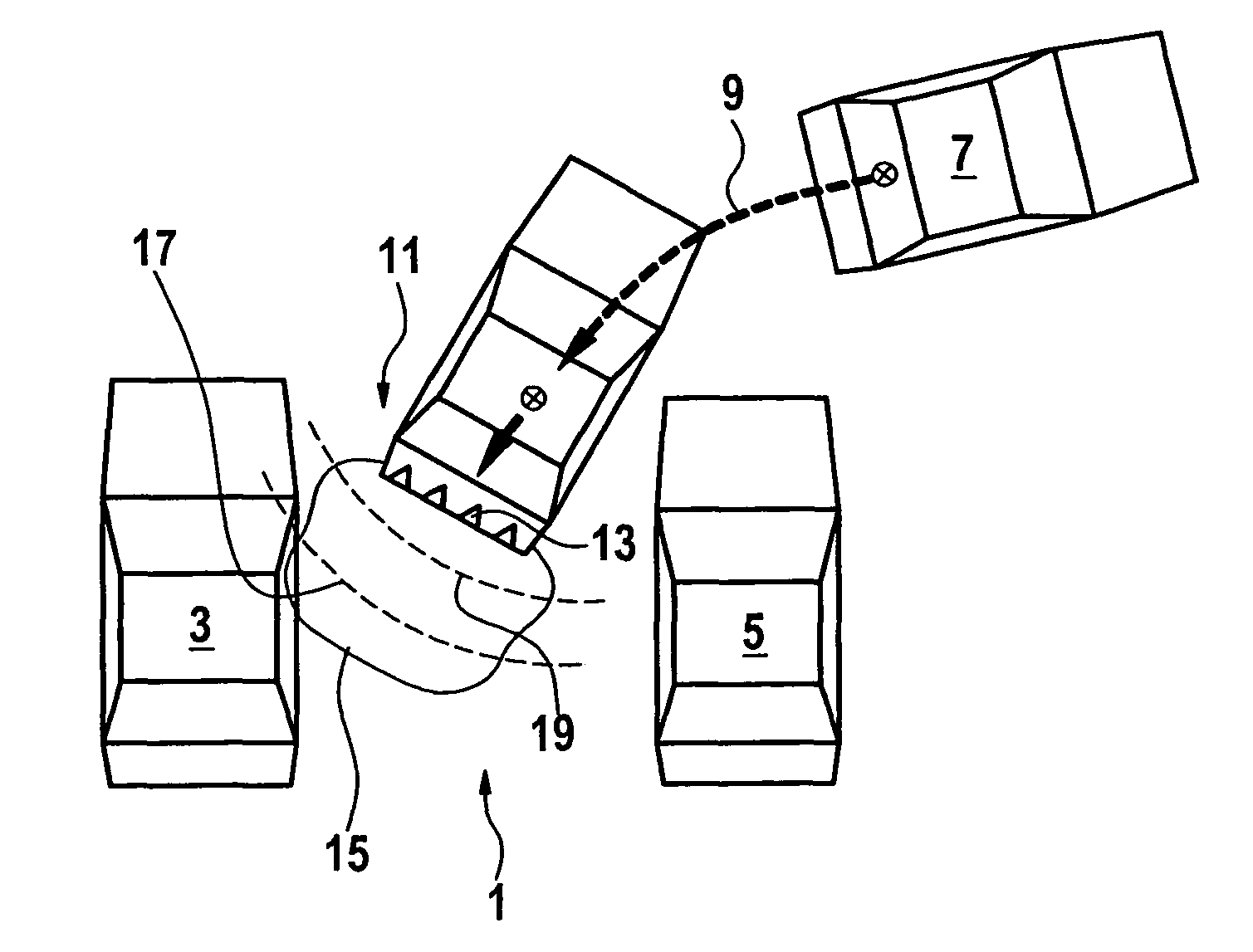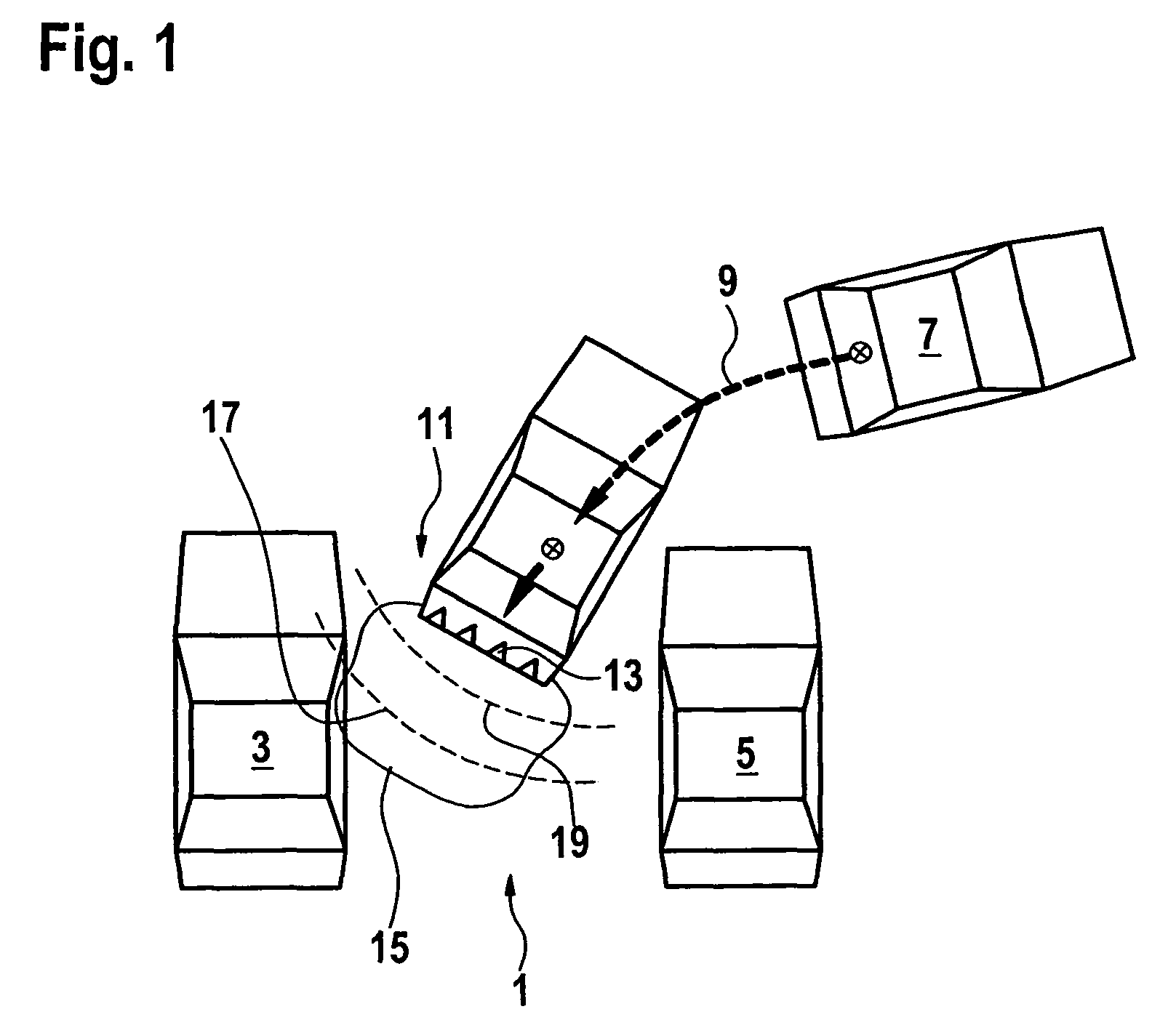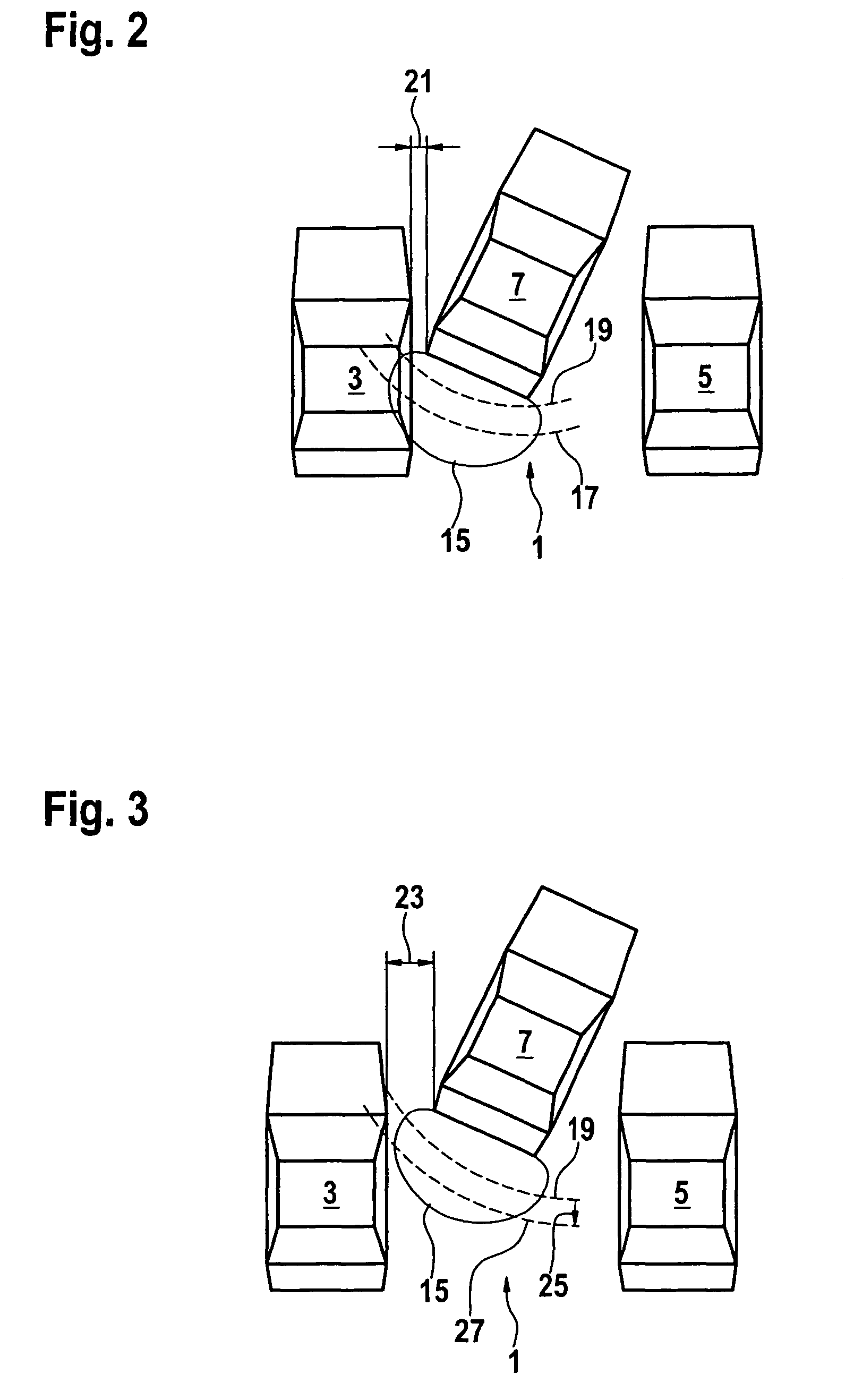Method for warning a driver of a collision
a technology for warning drivers and collisions, applied in the direction of non-deflectable wheel steering, external condition input parameters, underwater vessels, etc., can solve the problem of normal cost, reduce the minimum distance, reduce the specified minimum distance, and reduce the minimum distan
- Summary
- Abstract
- Description
- Claims
- Application Information
AI Technical Summary
Benefits of technology
Problems solved by technology
Method used
Image
Examples
Embodiment Construction
[0025]FIG. 1 schematically illustrates a parking operation in a perpendicular parking space.
[0026]A perpendicular parking space 1 is frequently delimited along its sides. For example, as illustrated here, the delimitation is by a first vehicle 3 and a second vehicle 5. In addition to the delimitation by vehicles 3, 5, however, it is also possible that a perpendicular parking space is delimitated by a wall or plants at least on one side. A delimitation by walls is encountered in a garage, for instance.
[0027]Parking in a perpendicular parking space 1 may be carried out by driving forward or in reverse. If parking in perpendicular space 1 is executed by backing up, then a vehicle 7 to be parked first executes a backup move 9 into the parking space. Backup move 9 is usually performed in such a way that the vehicle drives up to one of vehicles 3, 5 delimiting perpendicular parking space 1 at an angle. In the specific embodiment shown here, vehicle 7 to be parked drives toward first vehic...
PUM
 Login to View More
Login to View More Abstract
Description
Claims
Application Information
 Login to View More
Login to View More - R&D
- Intellectual Property
- Life Sciences
- Materials
- Tech Scout
- Unparalleled Data Quality
- Higher Quality Content
- 60% Fewer Hallucinations
Browse by: Latest US Patents, China's latest patents, Technical Efficacy Thesaurus, Application Domain, Technology Topic, Popular Technical Reports.
© 2025 PatSnap. All rights reserved.Legal|Privacy policy|Modern Slavery Act Transparency Statement|Sitemap|About US| Contact US: help@patsnap.com



